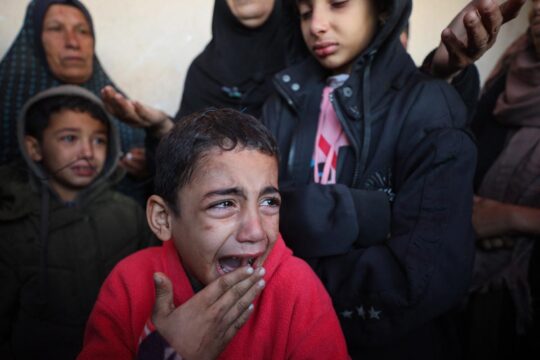Civilian casualties in Afghanistan in 2016 were the highest recorded by the UN, the world body said Monday, with nearly 11,500 non-combatants -- one third of them children -- killed or wounded.
Fighting between Afghan security forces and militants, especially in populated areas, remained "the leading cause of civilian casualties" more than two years after NATO's combat mission ended, said the United Nations, which began documenting civilian casualties in 2009.
The United Nations Assistance Mission in Afghanistan (UNAMA) said there were 11,418 civilian casualties (3,498 deaths and 7,920 injured), an increase of three percent over 2015, underscoring growing insecurity.
More than 3,500 children were among the victims, a "disproportionate" increase of 24 percent in one year, the report said. This was mainly due to a 66 percent increase in casualties, most of whom were children, from unexploded ordnance.
The UN's special envoy to Afghanistan Tadamichi Yamamoto said the new figures were "deeply harrowing" and highlight "the gruesome reality of the conflict".
He called on all parties -- militants as well as pro-government forces -- to cease fighting in populated areas, and stop using schools, hospitals and mosques for military purposes.
"The continuation of attacks targeting civilians... is illegal, reprehensible and, in most cases, may amount to a war crime," the report said.
"It is imperative that the perpetrators, whoever they are, be held accountable for such acts."
Save the Children also expressed its alarm at the "extremely concerning" figures, saying in a statement they represent a "very real failure to protect the most vulnerable".
"Children are innocent victims of conflict and need to be protected at all costs. They must be seen as off limits no matter what," Save the Children's Afghanistan country director Ana Locsin said.
- IS a 'deadly' component -
The vast majority (61 percent) of the casualties last year were attributed to "anti-government elements", mainly the Taliban, but also to the Islamic State group, while 24 percent were pinned on pro-government forces.
The report documented an alarming tenfold increase in attacks by the Islamic State group, particularly targeting Shia Muslims, resulting in 899 civilian casualties (209 deaths and 690 injured).
The UN's High Commissioner for Human Rights, Zeid Ra'ad Al Hussein, said the emergence of Islamic State in Afghanistan was an "additional, deadly component" to nearly four decades of conflict.
The Afghan government said in a statement it was committed to thoroughly investigating instances where civilian casualties may have been caused by security forces, and holding those responsible to account.
The Taliban rejected the report as "one-sided", blaming government forces and the US for the toll.
Last year also saw the highest number yet of civilian casualties caused by air strikes -- 590, of whom 250 were killed, the report said.
That is nearly double the number of 2015, with women and children in populated areas often the victims, such as near the northern provincial capital of Kunduz in October when Taliban insurgents stormed the city.
The report recorded the majority of civilian casualties in Kabul province followed by Helmand, Kandahar, Nangarhar, Uruzgan, Kunduz and Faryab provinces, said the mission's human rights director Danielle Bell.
In the eight years since the United Nations launched the annual report, the conflict has claimed 24,841 civilian lives with 45,347 injuries, it said.
It comes as officials warn of a growing humanitarian crisis, as unprecedented numbers of people flee the fighting while hundreds of thousands of failed asylum seekers are repatriated home.
"With the start of the traditional fighting season not far away with the end of winter, it could get even worse in the coming months," Save the Children's Locsin said.
"Far more international help is most definitely needed."
ach-mam-us-st/amj


